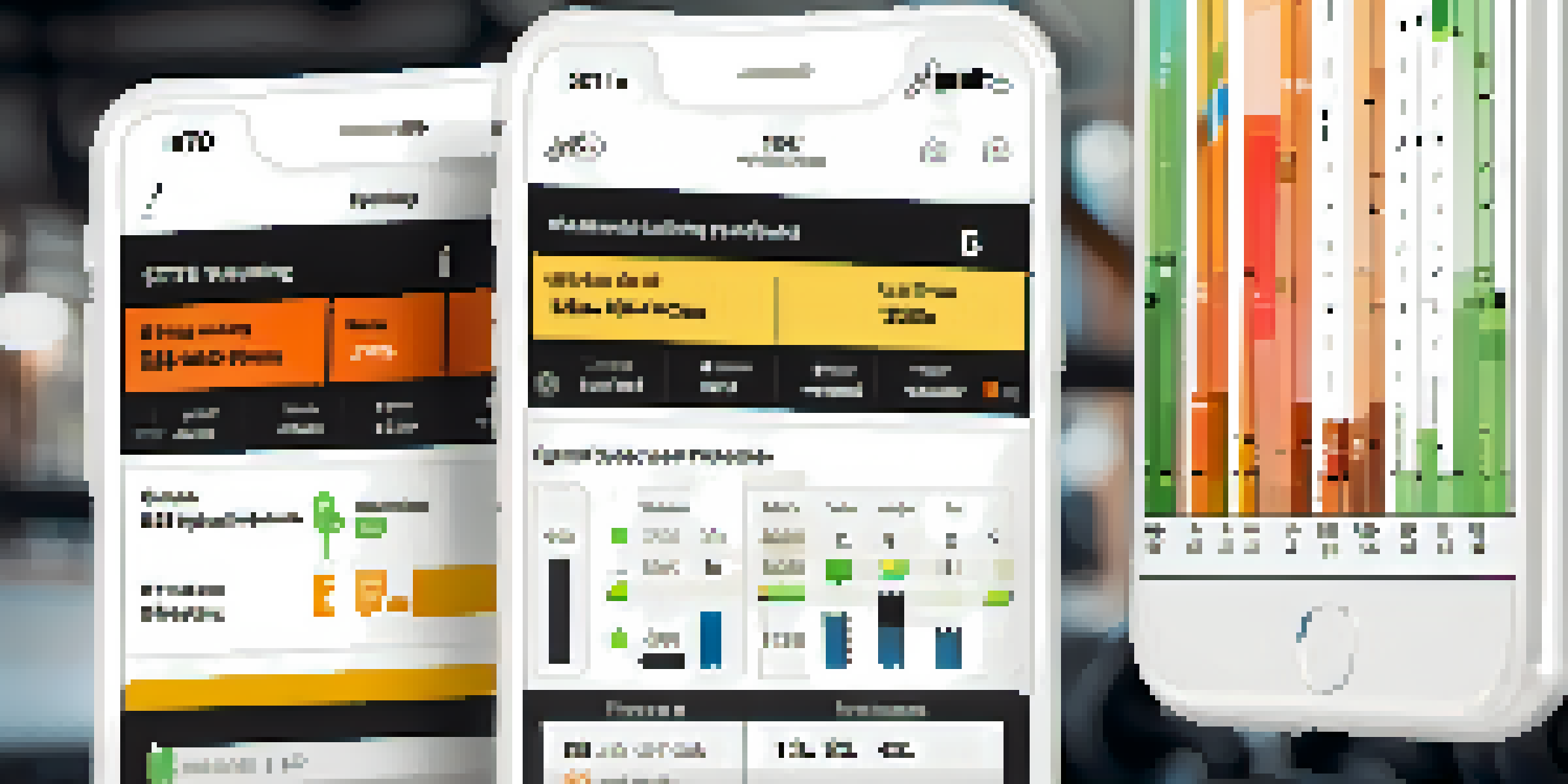Using Apps to Monitor Progress in Powerlifting Training

Understanding the Role of Apps in Powerlifting
In today’s digital age, apps have revolutionized how athletes train, especially in powerlifting. They provide a platform to track progress, set goals, and analyze performance metrics, making training more efficient. Instead of relying on pen and paper, lifters can access their data anytime, anywhere, leading to better-informed decisions.
What gets measured gets managed.
Using an app can feel like having a personal coach in your pocket. It’s not just about logging weights; it’s about understanding your body and its responses over time. This insight can help you adjust your training regimen based on what’s working and what’s not.
Moreover, apps often include community features that connect you with other lifters. This social aspect can boost motivation and accountability, encouraging you to push through those tough training days.
Key Features to Look for in Powerlifting Apps
When choosing a powerlifting app, it’s essential to consider the features that will best support your training goals. Look for apps that allow you to log workouts, track personal records, and analyze your lifting patterns. A good app should also offer a user-friendly interface that makes it easy to input and access your data.

Another valuable feature is workout planning. Some apps allow you to create customized training programs, which can be especially beneficial if you follow a specific routine like the Texas Method or 5/3/1. This feature helps you stay on track and ensures you’re progressively overloading your muscles.
Apps Enhance Powerlifting Training
Powerlifting apps provide tools for tracking progress, setting goals, and analyzing performance, making training more efficient.
Lastly, consider apps that integrate with wearable devices. This can help streamline your data collection, giving you a comprehensive view of your performance, including heart rate and calorie expenditure during workouts.
Popular Apps for Powerlifting Progress Tracking
There are several apps on the market designed specifically for powerlifters. Apps like 'MyFitnessPal' can help you track nutrition alongside your lifting, while 'Strong' focuses purely on workout logging. Each app has its unique offerings, so explore a few to find what fits your needs best.
Success is the sum of small efforts, repeated day in and day out.
'Barbell Logic' is another excellent choice, especially for those who appreciate a more structured coaching approach. It offers personalized programs alongside progress tracking, making it easier to stay accountable.
For lifters who enjoy social interaction, 'Lift Tracker' provides community features that allow you to share your lifts and achievements with friends, fostering a supportive training environment.
Setting Realistic Goals with Your App
Setting realistic goals is crucial in powerlifting, and apps can help you visualize these objectives clearly. Start by breaking down your main goal—like lifting a specific weight—into smaller, achievable milestones. This way, you can celebrate small victories along the way, which can keep you motivated.
Apps typically allow you to set these goals and track your progress visually, often through graphs or charts. Seeing your improvements over time can be incredibly encouraging and remind you of how far you've come.
Key Features for Effective Apps
Look for apps that offer workout logging, personalized training programs, and compatibility with wearable devices to maximize your training.
Additionally, having a clear record of your lifts will help you adjust your goals based on your progress. If you notice that you’re consistently exceeding your targets, it might be time to raise the bar and challenge yourself further.
Analyzing Your Progress with Data Insights
One of the significant advantages of using apps is the ability to analyze your training data. Most apps will provide you with insights like lift frequency, volume, and intensity, which can be invaluable for identifying patterns in your performance. This analysis helps you understand what training methods yield the best results for you.
For example, if you notice that your deadlift improves significantly when you focus on accessory lifts like Romanian deadlifts, you might choose to incorporate more of those into your routine. The data takes the guesswork out of training adjustments, allowing you to be more strategic.
Moreover, many apps also offer comparison features, allowing you to compare your lifts to those of other users or community standards. This can provide additional motivation and insight into where you stand among your peers.
Staying Consistent and Motivated with Reminders
Staying consistent with your training is one of the biggest challenges in powerlifting, but apps can help with that. Many apps allow you to set reminders for your workouts, ensuring you don’t skip sessions. These nudges can be just what you need to maintain your training schedule.
Additionally, some apps incorporate gamification elements, rewarding you for completing workouts or hitting milestones. This can turn training into a fun challenge rather than a chore, making you more likely to stick with it.
Nutrition Tracking Boosts Performance
Integrating nutrition tracking with training apps helps powerlifters understand the impact of their diet on performance and recovery.
Being part of a larger community within the app can also provide motivation. Seeing others achieve their goals and share their progress can inspire you to keep pushing toward your targets.
Integrating Nutrition Tracking with Training Apps
Nutrition plays a vital role in powerlifting, and integrating it with your training app can enhance your performance. Many popular fitness apps offer the option to track your food intake, allowing you to see how your diet supports your lifting goals. This holistic approach helps you understand the relationship between what you eat and how you lift.
For instance, if you notice a drop in your performance during a training cycle, reviewing your nutrition data might reveal that you're not consuming enough protein or calories. This insight can guide adjustments to your diet, leading to better recovery and gains.

Furthermore, some apps even provide meal planning features, making it easier to prepare meals that fuel your workouts. This saves time and ensures you're making choices that align with your lifting goals.